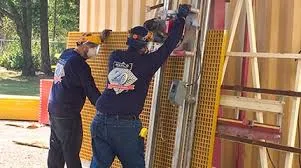
-
 Afrikaans
Afrikaans -
 Albanian
Albanian -
 Amharic
Amharic -
 Arabic
Arabic -
 Armenian
Armenian -
 Azerbaijani
Azerbaijani -
 Basque
Basque -
 Belarusian
Belarusian -
 Bengali
Bengali -
 Bosnian
Bosnian -
 Bulgarian
Bulgarian -
 Catalan
Catalan -
 Cebuano
Cebuano -
 China
China -
 China (Taiwan)
China (Taiwan) -
 Corsican
Corsican -
 Croatian
Croatian -
 Czech
Czech -
 Danish
Danish -
 Dutch
Dutch -
 English
English -
 Esperanto
Esperanto -
 Estonian
Estonian -
 Finnish
Finnish -
 French
French -
 Frisian
Frisian -
 Galician
Galician -
 Georgian
Georgian -
 German
German -
 Greek
Greek -
 Gujarati
Gujarati -
 Haitian Creole
Haitian Creole -
 hausa
hausa -
 hawaiian
hawaiian -
 Hebrew
Hebrew -
 Hindi
Hindi -
 Miao
Miao -
 Hungarian
Hungarian -
 Icelandic
Icelandic -
 igbo
igbo -
 Indonesian
Indonesian -
 irish
irish -
 Italian
Italian -
 Japanese
Japanese -
 Javanese
Javanese -
 Kannada
Kannada -
 kazakh
kazakh -
 Khmer
Khmer -
 Rwandese
Rwandese -
 Korean
Korean -
 Kurdish
Kurdish -
 Kyrgyz
Kyrgyz -
 Lao
Lao -
 Latin
Latin -
 Latvian
Latvian -
 Lithuanian
Lithuanian -
 Luxembourgish
Luxembourgish -
 Macedonian
Macedonian -
 Malgashi
Malgashi -
 Malay
Malay -
 Malayalam
Malayalam -
 Maltese
Maltese -
 Maori
Maori -
 Marathi
Marathi -
 Mongolian
Mongolian -
 Myanmar
Myanmar -
 Nepali
Nepali -
 Norwegian
Norwegian -
 Norwegian
Norwegian -
 Occitan
Occitan -
 Pashto
Pashto -
 Persian
Persian -
 Polish
Polish -
 Portuguese
Portuguese -
 Punjabi
Punjabi -
 Romanian
Romanian -
 Russian
Russian -
 Samoan
Samoan -
 Scottish Gaelic
Scottish Gaelic -
 Serbian
Serbian -
 Sesotho
Sesotho -
 Shona
Shona -
 Sindhi
Sindhi -
 Sinhala
Sinhala -
 Slovak
Slovak -
 Slovenian
Slovenian -
 Somali
Somali -
 Spanish
Spanish -
 Sundanese
Sundanese -
 Swahili
Swahili -
 Swedish
Swedish -
 Tagalog
Tagalog -
 Tajik
Tajik -
 Tamil
Tamil -
 Tatar
Tatar -
 Telugu
Telugu -
 Thai
Thai -
 Turkish
Turkish -
 Turkmen
Turkmen -
 Ukrainian
Ukrainian -
 Urdu
Urdu -
 Uighur
Uighur -
 Uzbek
Uzbek -
 Vietnamese
Vietnamese -
 Welsh
Welsh -
 Bantu
Bantu -
 Yiddish
Yiddish -
 Yoruba
Yoruba -
 Zulu
Zulu
Exploring the Benefits and Applications of FRP Pipe Technology in Modern Industries
Understanding FRP Pipes A Comprehensive Overview
FRP (Fiber Reinforced Polymer) pipes have gained significant traction in various industries due to their exceptional properties and wide-ranging applications. Made from a composite of polymer resin reinforced with fibers, typically glass, carbon, or aramid, FRP pipes offer numerous advantages over traditional materials like steel, concrete, and PVC.
Key Properties of FRP Pipes
One of the standout characteristics of FRP pipes is their remarkable strength-to-weight ratio. They are much lighter than metal pipes, making them easier to transport and install. This lightweight nature also reduces the strain on supporting structures, leading to cost savings in construction and maintenance.
FRP pipes are known for their outstanding resistance to corrosion, which is crucial in industries such as chemical processing, wastewater treatment, and oil and gas. The polymer matrix provides a barrier against aggressive chemicals, ensuring the longevity of the pipes and reducing the need for frequent replacements.
Additionally, FRP pipes can withstand extreme temperatures, making them suitable for both hot and cold applications. Their thermal insulation properties can also enhance energy efficiency by minimizing heat loss or gain in piping systems.
Applications of FRP Pipes
The versatility of FRP pipes allows them to be used in a wide array of applications. In the oil and gas industry, they are utilized for transporting crude oil and natural gas, given their resilience to high pressures and corrosive environments. In water treatment facilities, FRP pipes are employed for the transport of potable water and wastewater, benefiting from their corrosion resistance and low maintenance requirements.
frp pipe

Moreover, in the construction sector, FRP pipes are becoming increasingly popular for drainage systems, stormwater management, and as conduits for various utilities. Their adaptability to various installation environments, including underground and above-ground, further enhances their appeal.
Advantages Over Traditional Materials
When compared to traditional piping materials, FRP pipes exhibit several advantages. For instance, unlike metal pipes, they do not suffer from oxidation, which can lead to leaks and premature failure. The lightweight construction of FRP reduces installation costs, as less manpower and specialized equipment are required. Furthermore, the versatility of the molding process for FRP allows for the creation of custom shapes and sizes, catering to specific project requirements.
Challenges in FRP Pipe Usage
Despite their numerous benefits, the use of FRP pipes is not without challenges. The initial cost of FRP materials can be higher than that of conventional piping systems. However, this is often offset by their durability, which leads to lower lifecycle costs. Additionally, while FRP pipes have excellent resistance to most chemicals, they may not be suitable for certain aggressive substances like concentrated acids or alkalis, necessitating careful consideration of material compatibility in applications.
Conclusion
In summary, FRP pipes represent a significant advancement in piping technology, offering a blend of lightweight construction, corrosion resistance, and versatility. With applications spanning multiple industries, they are an excellent choice for projects requiring durability and reliability. As technology continues to evolve, the adoption of FRP pipes is expected to grow, driven by increasing demand for efficient and sustainable infrastructure solutions. As engineers and project managers become more familiar with the advantages of FRP, we are likely to see its role expand further in both new and existing applications.









